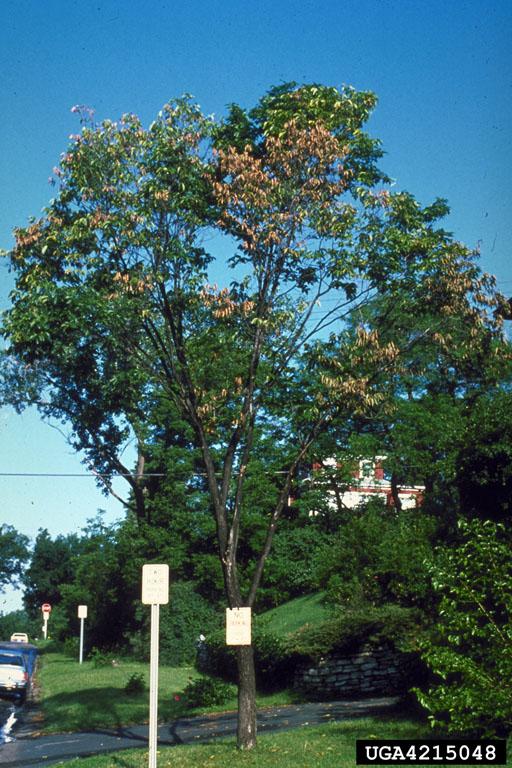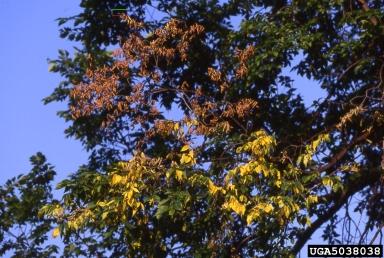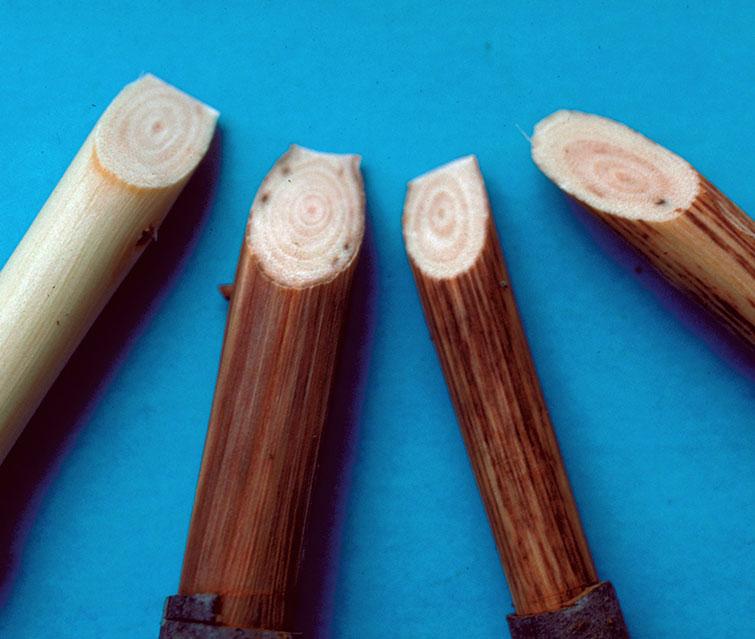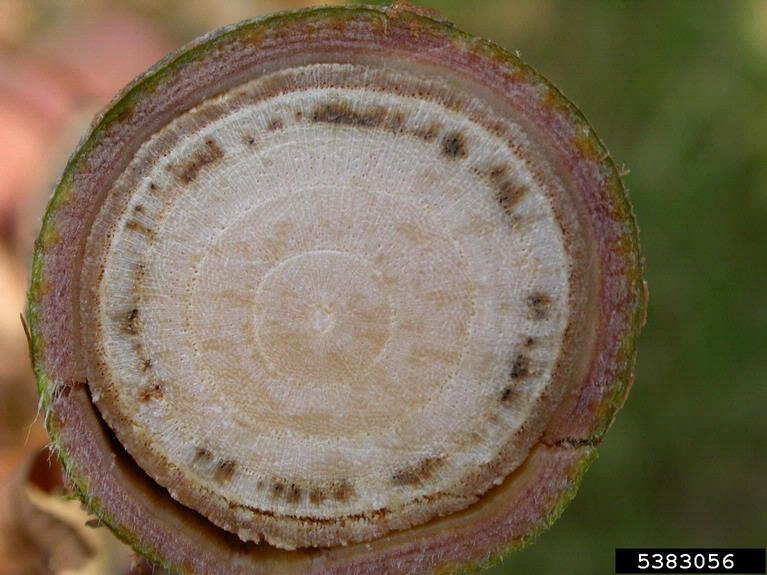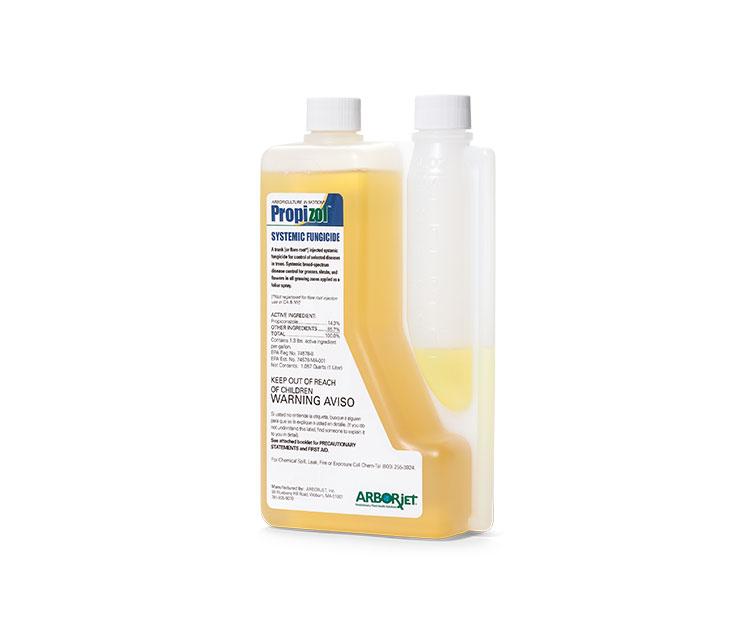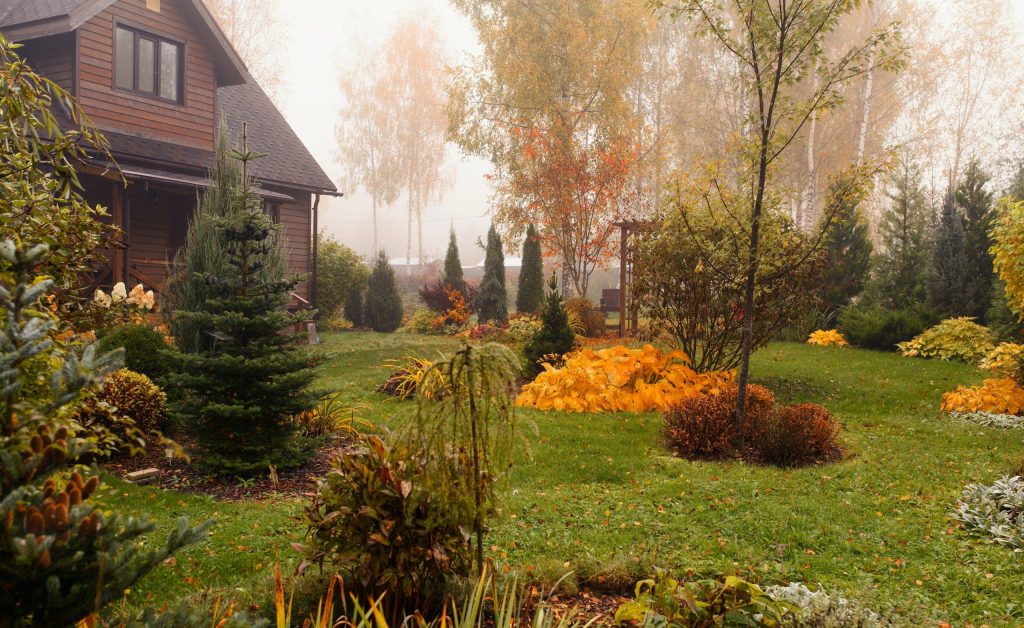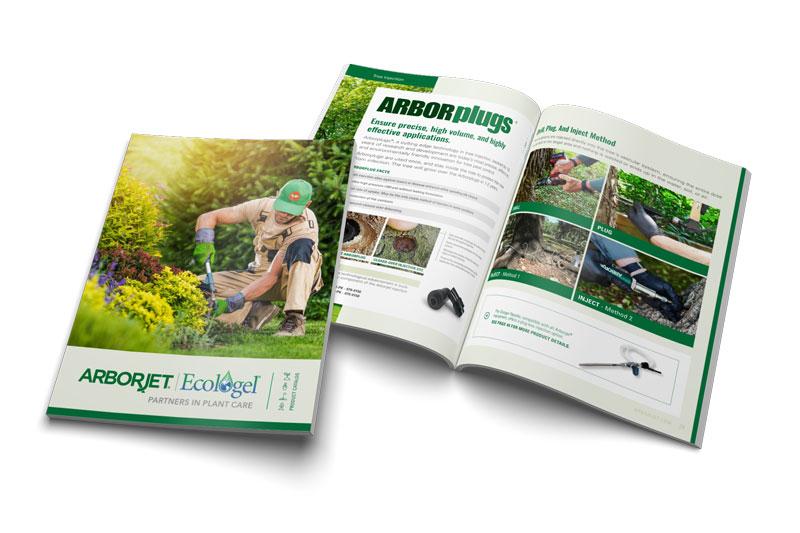Dutch Elm Disease
Dutch Elm Disease (DED, Ophiostoma novo-ulmi) is a vascular wilt disease that causes rapid decline of elms in as few as 6 weeks after infection.
American and European elms are commonly infected in two ways: via elm bark beetles that vector the disease from infected to healthy trees, or via fungi that are transmitted through root grafts. Dutch Elm Disease is an aggressive disease that is almost always fatal to the host tree once it becomes established.
Common Symptoms
Leaves show signs of wilting (flagging), yellowing and browning. Brown or purplish discoloration is found in sapwood under the bark and dieback will occur shortly after symptoms are first discovered.
Treatments
DED must be treated proactively before the disease is present in the tree. The disease spreads so quickly that treatment of diseased trees may not be effective. We recommend a trunk injection of Propizol® fungicide as a proactive treatment, or else at the earliest stages of infection.
If treating an infected tree, the following should be performed in addition to the micro-infusion treatment:
- Prune flagging branches immediately as the vascular wilt moves rapidly in the sapwood.
- Strip the bark from the branch with flagging symptoms.
- Inspect the sapwood for streaking (dark staining).
- Cut the branch 6-10 feet beyond the discolored area to clear wood, ideally to a branch bark collar.
- Properly dispose of the infected wood or debark it completely.
- Make sure to disinfect all tools between each cut or drill hole using a bleach solution.
- Trenching between infected and non-infected trees will slow the spread of the disease by root grafts.
When To Treat
For DED, we recommend that Propizol be applied in the spring prior to beetle flight. Best treatment response can be expected when less than 15% of the canopy is affected.
What To Expect After Treatment
Tree recovery will be dependent upon the severity of the Dutch Elm Disease infection at the time of trunk injection, as well as upon the extent of eradicative pruning. Up to 60% of infected elm trees have recovered using the pruning and treatment techniques recommended above.
References And Photo Credits
Early symptoms of DED-infected elm taken by Fred Baker, Utah State University, Bugwood.org
DED Branch flagging taken by Joseph O’Brian, USDA Forest Service, Bugwood.org
Staining of xylem of elm branches taken by R. Scott Cameron, Advanced Forest Protection, Inc., Bugwood.org
DED staining of elm stem; Fabio Stergulc, Università di Udine, Bugwood.org;

